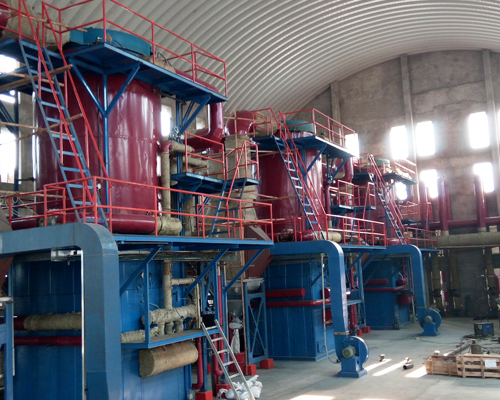Due to their increased temperature control and reliability, Thermic Fluid Heaters are becoming more popular in large industries. Steam boilers remain a valuable asset in the manufacturing and processing industries. However, thermic liquid heaters are gradually becoming the preferred equipment. Thermic fluid heaters offer enhanced performance, high temperatures at low pressure, minimal maintenance, low operating costs, and little downtime. Thermic fluid heaters also face issues, which should be addressed immediately, just like steam boiler problems. The key to resolving many issues is regular maintenance and checking of the equipment. The following are some of the most common issues that occur in thermic liquid heaters.
Problems during operations:
The system delivers radiant and convective heating to the heater tube placed inside the firebox. The heat is transferred through the tube to the film layer. Fluid is turbulence causes film layer to quickly mix with fluid. The fluid returns to the pump at a lower temperature and carries more heat.
Normal operation equals the temperature of the flame. The heat from these components must be allowed to radiate for a longer time after the thermic liquid heaters have been shut down. The heater would need more time to radiate the excess heat if it had refractory components.
After the heater is shut down, the fluid that circulates carries heat to the system and distributes it.
Boiling point of Fluids:
Heat transfer fluids have different boiling points. Larger molecules boil at high temperatures and smaller molecules at lower temperatures. Even after the flame has been turned off, the natural convection continues to flow. The internal temperature remains high enough to cause the smaller and mid-sized molecules to vaporize. The larger molecules remain after the smaller molecules are boiled. The viscosity and higher percentage of molecules are reflected in the heat transfer fluid.
The liquid thickens and becomes more difficult to flow through the thermic heater. This requires more horsepower. Slow-moving fluids that remain in contact with heating surfaces reduce system performance, overheat and damage the thermic system.
The fluid film temperature increases when the flow is decreased. This leads to fluid degradation and, over time, a fouling of the heater by deposits and sludge.
Improper Shutdown:
The pump and heater stop circulating fluid when the thermic liquid heater is completely shut off. This results in the transfer of stored heat from refractory parts and structural metals to the firebox. Heat does not leave the stack after the blower is turned off, which causes the heater tubing to become extremely hot.
Power Outages:
If there is a power outage, you must ensure that the blower and the circulating pump are connected to the emergency power. The cost of replacing the thermic heater is much higher than the emergency power hookup.
Thermic Fluid Heaters Maintenance:
For a hassle-free operation, thermic fluid heating equipment needs to be maintained and serviced regularly. For efficient operation, it is important to consider:
Inspection of Insulation:
Thermic fluid heaters require proper insulation to function properly. Check that the heater insulation meets acceptable standards.
Piping Assessment:
Thermic fluid heaters are made up of many piping. It is important to inspect the piping and look for leaks, weak spots or other defects that require repair or replacement.
Annual Inspection:
To ensure proper operation, it is essential to inspect the system of thermic liquid annually. This should be done under the supervision of a professional or boiler manufacturer. For optimum performance, it is recommended to tune and inspect the burners.
Every plant manager is concerned with ensuring smooth operation and preventing mishaps. Regular maintenance and repair are necessary to achieve such goals. If you have severe problems or damage, consult a boiler manufacturer to determine if a replacement thermic fluid heating system is a better option than repair.
Veda Boilers has been a leader in the boiler industry and thermal solutions provider since its founding in 1983. We produce a variety of industrial steam boilers and accessories, including waste heat recovery systems, thermal fluid heaters and boiler accessories. We have built our reputation as a boiler supplier with over 3000 successful installations worldwide and our outstanding services.


